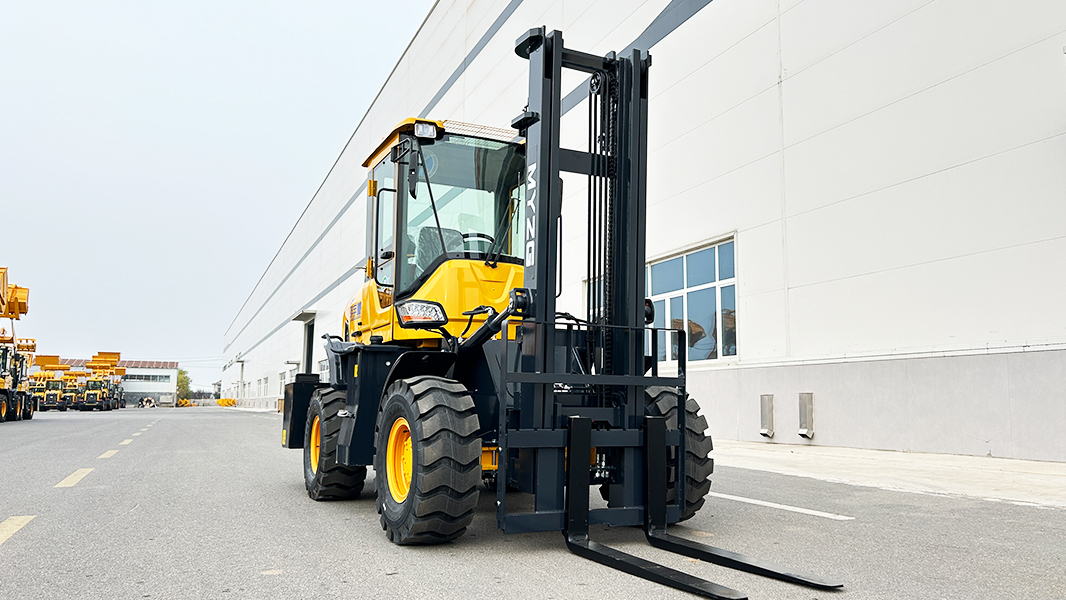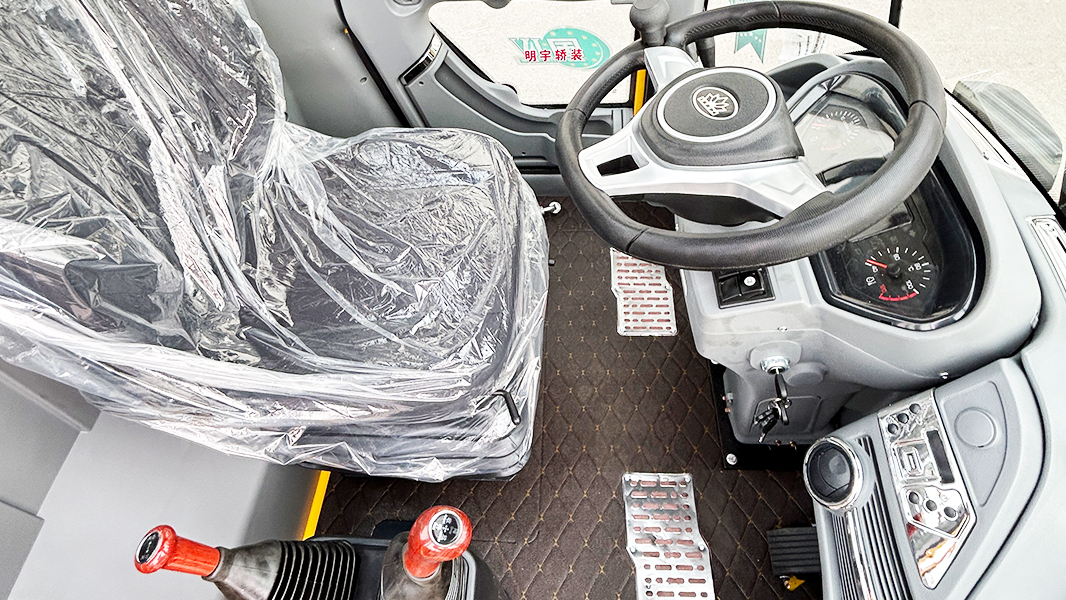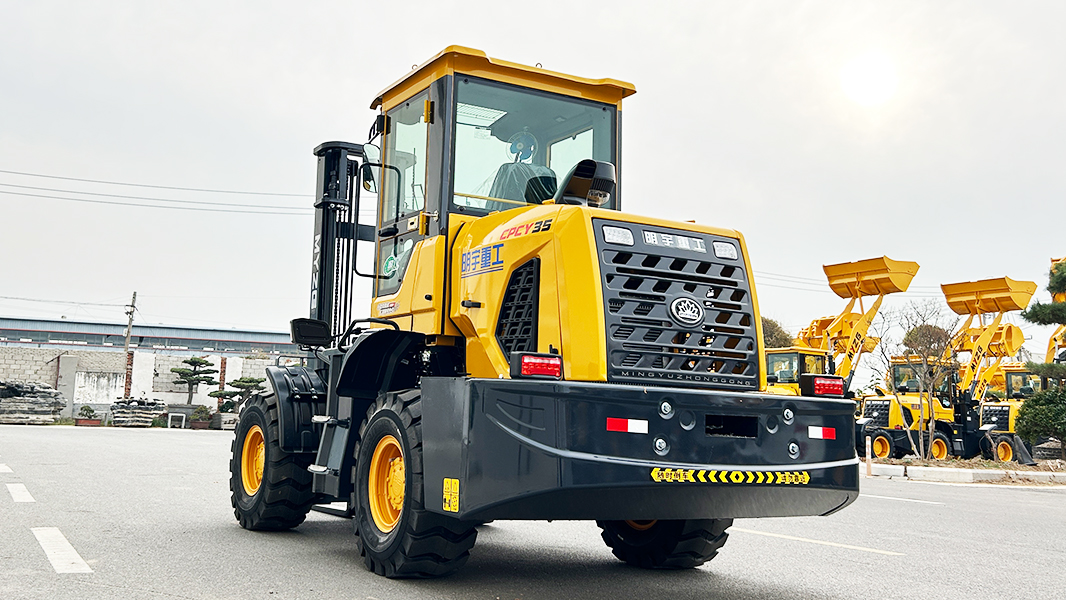I. Introduction
In the realm of material handling, the need for robust and adaptable equipment extends beyond the smooth floors of warehouses and distribution centers. Construction sites, lumber yards, agricultural fields, and military deployments demand forklifts capable of navigating challenging outdoor environments. This is where rough terrain forklifts, also known by a variety of names, step in. These specialized machines are designed to conquer uneven surfaces, muddy conditions, and steep inclines, ensuring efficient material movement in the most demanding settings. This article aims to explore the diverse world of rough terrain forklifts, unveiling their various names, designs, capabilities, and applications.
II. Defining Rough Terrain Forklifts
A. Core Characteristics:
Rough terrain forklifts are distinguished by their large, pneumatic tires, which provide excellent traction and shock absorption on uneven surfaces.
High ground clearance is essential for navigating obstacles and preventing damage to the undercarriage.
A robust chassis and frame are built to withstand the stresses of off-road operation.
Powerful diesel engines and heavy-duty drive systems deliver the torque and traction needed for challenging terrain.
B. Design Variations:
Rough terrain forklifts are available in 2-wheel drive and 4-wheel drive configurations, with 4-wheel drive providing superior traction in extreme conditions.
Mast and lifting configurations vary depending on the application, with options for telescopic masts and specialized attachments.
Some models feature frame articulation, allowing for enhanced maneuverability in tight spaces.
C. Explanation of Hydraulic Systems:
Powerful hydraulic systems allow for the lifting and tilting of heavy loads, and are designed to provide consistent performance in rough conditions.
D. Safety Features:
Safety features include roll-over protection systems (ROPS), seat belts, and enhanced braking systems to ensure operator safety in challenging environments.
III. Common Names and Terminology
A. "Rough Terrain Forklift" as the Primary Term:
"Rough terrain forklift" is the most widely recognized and accepted term for these machines.
B. Alternative Names:
"All-terrain forklift" is commonly used to emphasize the machine's ability to handle various types of terrain.
"Construction forklift" and "Job site forklift" are frequently used within the construction industry.
"Yard forklift" is another common term, particularly in lumber and construction yards.
Regional variations in terminology exist, with some areas using slightly different terms.
C. Industry-Specific Terms:
"Forestry forklifts" are specialized models designed for handling logs and timber in challenging forestry environments.
"Military forklifts" are built to meet the demanding requirements of military logistics and deployment.
"Agricultural forklifts" are adapted for use in farms and orchards, handling bales, produce, and other agricultural materials.
D. Acronyms and Abbreviations:
Sometimes these machines are shortened to RTFL.
IV. Performance and Capabilities
A. Terrain Adaptability:
Rough terrain forklifts excel on uneven surfaces, providing stable and reliable material handling in challenging conditions.
Their large pneumatic tires and robust drive systems provide excellent traction in mud, sand, and gravel.
They are designed to handle inclines and obstacles, ensuring efficient operation on rough terrain.
B. Lifting and Load Handling:
Lifting capacity and height vary depending on the model, with some rough terrain forklifts capable of handling extremely heavy loads.
Load stability and safety are crucial considerations, with features like load stabilizers and precise hydraulic controls.
Attachment versatility allows for the use of various tools, such as forks, grapples, and buckets, to handle diverse materials.
C. Power and Drive Systems:
Diesel engines are the standard power source for rough terrain forklifts, providing the high torque required for off-road operation.
Transmission and drive system configurations vary, with options for manual, automatic, and hydrostatic transmissions.
High torque is very important for these machines, to allow them to move heavy loads, on uneven surfaces.
V. Applications and Industries
A. Construction and Building Sites:
Rough terrain forklifts are essential for moving building materials, such as lumber, concrete blocks, and steel beams.
They are used for site preparation, cleanup, and general material handling.
B. Lumber and Forestry:
These machines are vital for handling logs and timber in challenging forestry environments.
They are used for loading and unloading trucks, moving materials in lumber yards, and working in remote locations.
C. Agriculture and Farming:
Rough terrain forklifts are used for moving bales, produce, and other agricultural materials in fields and orchards.
They are essential for efficient material handling in farming operations.
D. Military and Defense:
These machines are used for logistics and supply chain support in military deployments.
They are designed to operate in challenging environments, ensuring the efficient movement of equipment and supplies.
E. Oil and Gas Fields, and Mining:
These machines are used to move heavy equipment, and supplies around these remote job sites.
VI. Choosing the Right Rough Terrain Forklift
A. Key Considerations:
Terrain conditions are the most important factor in selecting a rough terrain forklift.
Lifting capacity and height requirements must be matched to the specific application.
Attachment needs should be considered to ensure versatility.
Budget and operational costs, including fuel consumption and maintenance, should be evaluated.
B. Maintenance Considerations:
Rough terrain forklifts require regular maintenance to ensure reliable operation in challenging conditions.
C. Operator Training and Safety:
Proper operator training is essential for safe and efficient operation.
VII. Conclusion
Rough terrain forklifts, known by various names, are indispensable machines for material handling in challenging outdoor environments. Their robust design, powerful engines, and versatile capabilities make them essential in construction, lumber, agriculture, military, and other demanding industries. As technology advances, these machines continue to evolve, offering improved performance, safety, and efficiency for off-road material handling.
Post time:Mar.31.2025



